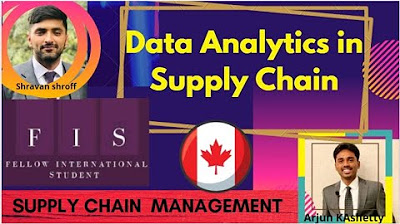Track B - Evaluating Supply Chain Strains in their Race to Robustness, Flexibility & Resilience
Summary
TLDR在这段演讲稿中,演讲者Rajiv Gupta先生,一位资深的数据科学家,讨论了供应链韧性的重要性。他指出,在全球化和外包成为主流的背景下,公司往往只关注成本效率,而忽视了潜在的风险。2020年的疫情和近年来的政治冲突,如俄乌战争,暴露了这种集中化供应链的脆弱性。Gupta先生强调,企业需要在成本和韧性之间找到平衡,通过多元化供应商、建立强有力的生态系统伙伴关系、增强企业风险管理流程,以及实现端到端供应链控制来构建韧性。他还提到,一些国家如日本、澳大利亚和印度已经开始采取行动,通过政府间的合作来增强供应链的韧性。最后,Gupta先生通过可口可乐公司在印度的芒果供应链管理案例,展示了如何通过前瞻性规划和合作伙伴关系来应对潜在的供应链风险。
Takeaways
- 👤 **个人简介**:Rajiv Gupta先生是一位数据科学家,拥有CFE、CA和SISA资格,专注于新兴技术、风险管理、高级数据分析、内部控制、治理以及推动组织文化变革。
- 📚 **专业成就**:Gupta先生是《内部审计技术指南:饮料行业》一书的作者,被评为印度审计和治理领域前20名思想领袖之一。
- 🌐 **供应链韧性**:Gupta先生讨论了供应链韧性的重要性,强调在面对如COVID-19和俄乌战争等黑天鹅事件时,企业如何维持运营的重要性。
- 🔄 **风险与效率**:他指出,过去企业倾向于将成本效率作为唯一驱动力,但现在意识到必须在成本和供应链的韧性之间取得平衡。
- 🌱 **供应链多元化**:Gupta先生提到了供应链多元化的重要性,包括“中国+1”政策,即在中国以外寻找另一个生产基地,以减少对单一供应商的依赖。
- 🤝 **生态系统合作**:他强调了与供应商建立合作伙伴关系的重要性,而不仅仅是将他们视为简单的供应商,这有助于提高整个供应链的质量。
- 🔍 **端到端控制**:企业正在加强对供应链的端到端控制,从原材料的来源到最终产品,以确保能够快速检测和响应潜在风险。
- 📈 **风险管理**:Gupta先生讨论了企业如何通过加强企业风险管理流程来提高对潜在风险的检测、响应和恢复能力。
- 🌟 **前瞻性投资**:他提到了可口可乐公司如何通过投资创新技术和支持初创企业来减少对单一供应商的依赖,展示了企业如何通过前瞻性投资来增强供应链韧性。
- ⏱️ **及时行动**:Gupta先生强调了在面对潜在的供应链风险时,企业需要迅速采取行动,以避免长期的运营中断。
- 🌍 **地缘政治考量**:他讨论了地缘政治因素如何影响全球供应链,以及企业如何需要将这些因素纳入风险管理策略中。
Q & A
如何定义供应链韧性?
-供应链韧性可以定义为在遇到意外事件(如COVID-19疫情或俄乌战争)对供应链产生负面影响时,企业能够确保业务持续,并尽快恢复至满负荷生产能力的能力。
为什么过去企业更倾向于外包和集中化生产?
-过去,企业更倾向于外包和集中化生产,因为这种方式成本效益最高,能够最大限度地减少成本。企业会将所有生产外包给世界上成本最低的国家,如中国,而只保留管理层。
在供应链管理中,什么是“中国+1”政策?
-“中国+1”政策是指企业除了在中国有主要供应商外,还会在其他国家设立一个或多个备用供应商,以减少对单一国家供应链的依赖,提高供应链的韧性。
企业如何通过建立供应链韧性来应对潜在风险?
-企业通过进行强项和弱点分析,了解哪些环节在控制之内,哪些不在控制之内。此外,企业还会进行压力测试,确保有多个供应商可以支持关键供应,并通过建立端到端的供应链控制来了解整个供应链的情况。
为什么说供应链韧性的建立不仅仅是成本问题?
-供应链韧性的建立虽然可能会增加一些成本,如维持多个供应地点的费用,但这应该被视为一种投资,它有助于确保企业的长期可持续发展,而不仅仅是短期的成本效率。
如何理解企业风险管理(ERM)在供应链韧性中的作用?
-企业风险管理(ERM)在供应链韧性中的作用是快速检测潜在风险,及时响应,并确保企业能够从影响中恢复。ERM团队需要有能力识别、评估和优先处理各种潜在风险。
为什么说审计师在供应链韧性中扮演重要角色?
-审计师在供应链韧性中扮演重要角色,因为他们负责评估和确认企业是否已经建立了有效的供应链韧性政策,并且这些政策是否得到了适当的执行和维护。审计师还需要确保企业的风险管理措施是透明和可追溯的。
在供应链韧性建设中,政府的角色是什么?
-政府在供应链韧性建设中扮演着关键角色,通过政策支持和国际合作,政府可以帮助企业减少对单一供应链的依赖,提高整个国家供应链的韧性。例如,日本、澳大利亚和印度之间的供应链韧性倡议。
如何通过投资创新来减少对单一供应商的依赖?
-企业可以通过投资创新和技术发展来减少对单一供应商的依赖。例如,可口可乐公司通过投资支持那些致力于开发新技术的初创企业,以减少对特定供应商或国家的依赖。
为什么说供应链中的“双重检查”是重要的?
-“双重检查”是指企业不仅要了解自己的直接供应商,还要了解供应商的供应商,这样可以更全面地了解供应链,识别潜在的风险点,并采取相应的措施来缓解这些风险。
企业如何通过地理政治关系来评估供应链风险?
-企业需要考虑供应链中各个环节的地理政治关系,特别是那些与本国政治关系紧张的国家。通过评估这些关系,企业可以识别潜在的供应链中断风险,并采取措施来缓解这些风险。
Outlines

This section is available to paid users only. Please upgrade to access this part.
Upgrade NowMindmap

This section is available to paid users only. Please upgrade to access this part.
Upgrade NowKeywords

This section is available to paid users only. Please upgrade to access this part.
Upgrade NowHighlights

This section is available to paid users only. Please upgrade to access this part.
Upgrade NowTranscripts

This section is available to paid users only. Please upgrade to access this part.
Upgrade NowBrowse More Related Video

Resiliencia en cadenas de suministro | Araceli Zavala | STEM TALKS

Data Analytics in Supply Chain Management Canada🍁 Tools to use🎒 Pay Range🚛Roles & Titles & Companies

How Can Supply Chains Embrace Sustainability?

From Automated to Autonomous Supply Chains

Scale Gov Summit 2024: Alexandr Wang Keynote

Intersectionality will save the future of science | Shawntel Okonkwo | TEDxUCLA
5.0 / 5 (0 votes)
